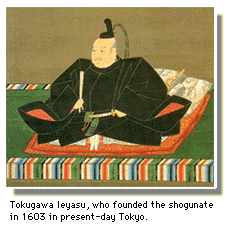 Tokugawa Ieyasu (1542-1616) founded the shogunate in Edo (now Tokyo) in 1603 that endured for more than 260 years after skillfully surviving a turbulent era of civil warfare.
Tokugawa Ieyasu (1542-1616) founded the shogunate in Edo (now Tokyo) in 1603 that endured for more than 260 years after skillfully surviving a turbulent era of civil warfare.
Ieyasu was born in 1542 in what is now Aichi Prefecture. As regional warlords were competing fiercely with one another for national domination at the time, he was forced to spend much of his childhood years as a hostage of the Imagawa clan, based in what is now Shizuoka Prefecture.
He gradually rose to prominence, and by joining forces with the general Oda Nobunaga (1534-82), who sought to bring the country under unified rule, Ieyasu steadily expanded his territorial holdings.
After Nobunaga's assassination, he watched the development of events closely as one of Nobunaga's top generals, Toyotomi Hideyoshi (1537-98), carried out his former overlord's goal of national unification. Ieyasu moved his base of operations to the Kanto district and began building a new regional capital in Edo.
In 1600, two years after Hideyoshi's death, Ieyasu emerged as the most powerful feudal lord in the country, defeating his biggest rival, Ishida Mitsunari (1560-1600), at the famed battle of Sekigahara and establishing a central government in Edo in 1603.
As shogun, he ordered the regional lords to destroy all their castles except those where they actually lived and encouraged the warrior class to pursue not only military arts but also scholarly learning. Ieyasu adopted many measures to secure the lords' allegiance to the new government, such as by establishing norms of conduct for the lords and their military retainers.
To strengthen the financial standing of the shogunate, moreover, he pursed an active trade policy with the nations of Southeast Asia.
Ieyasu died in 1616 at the age of 75.